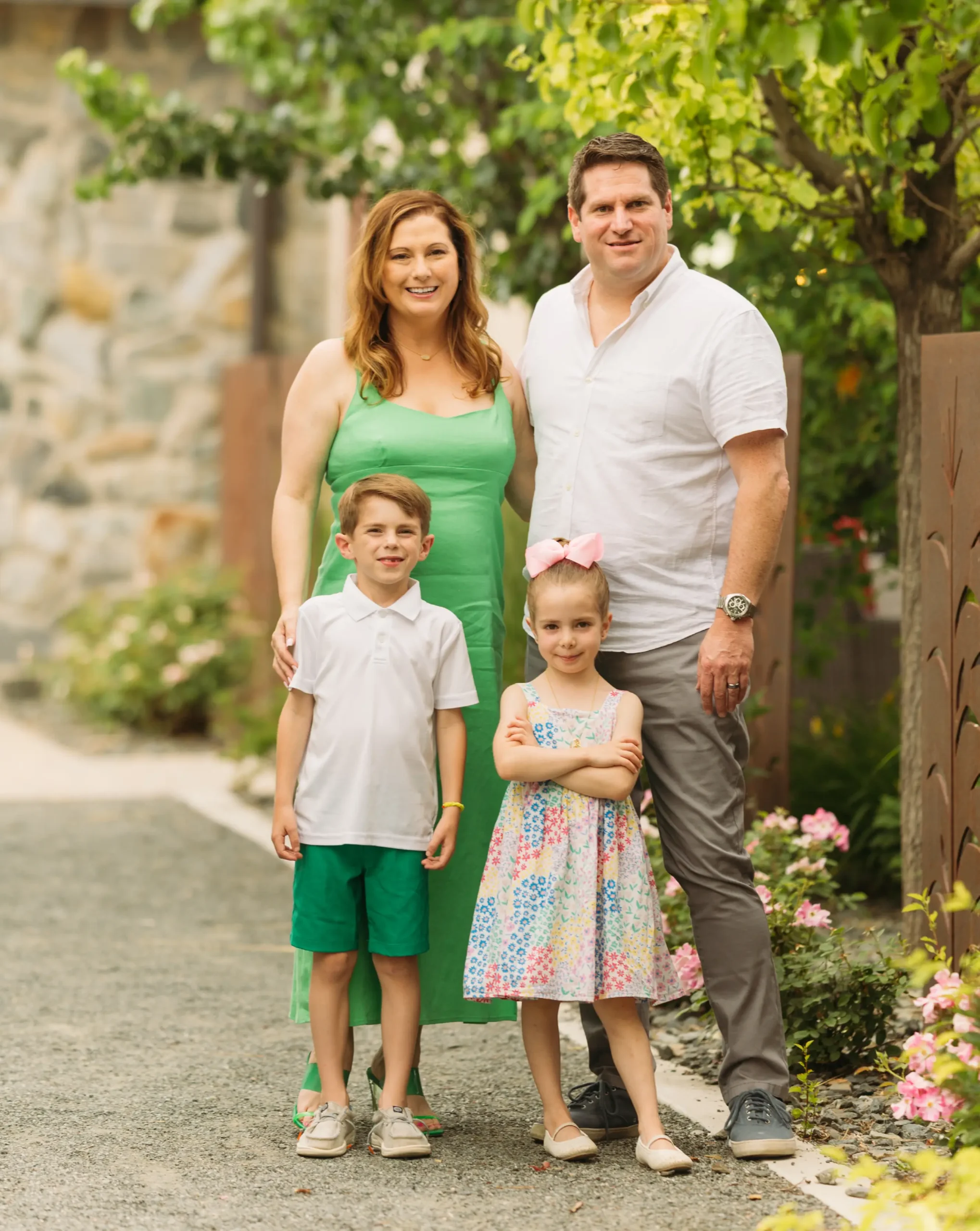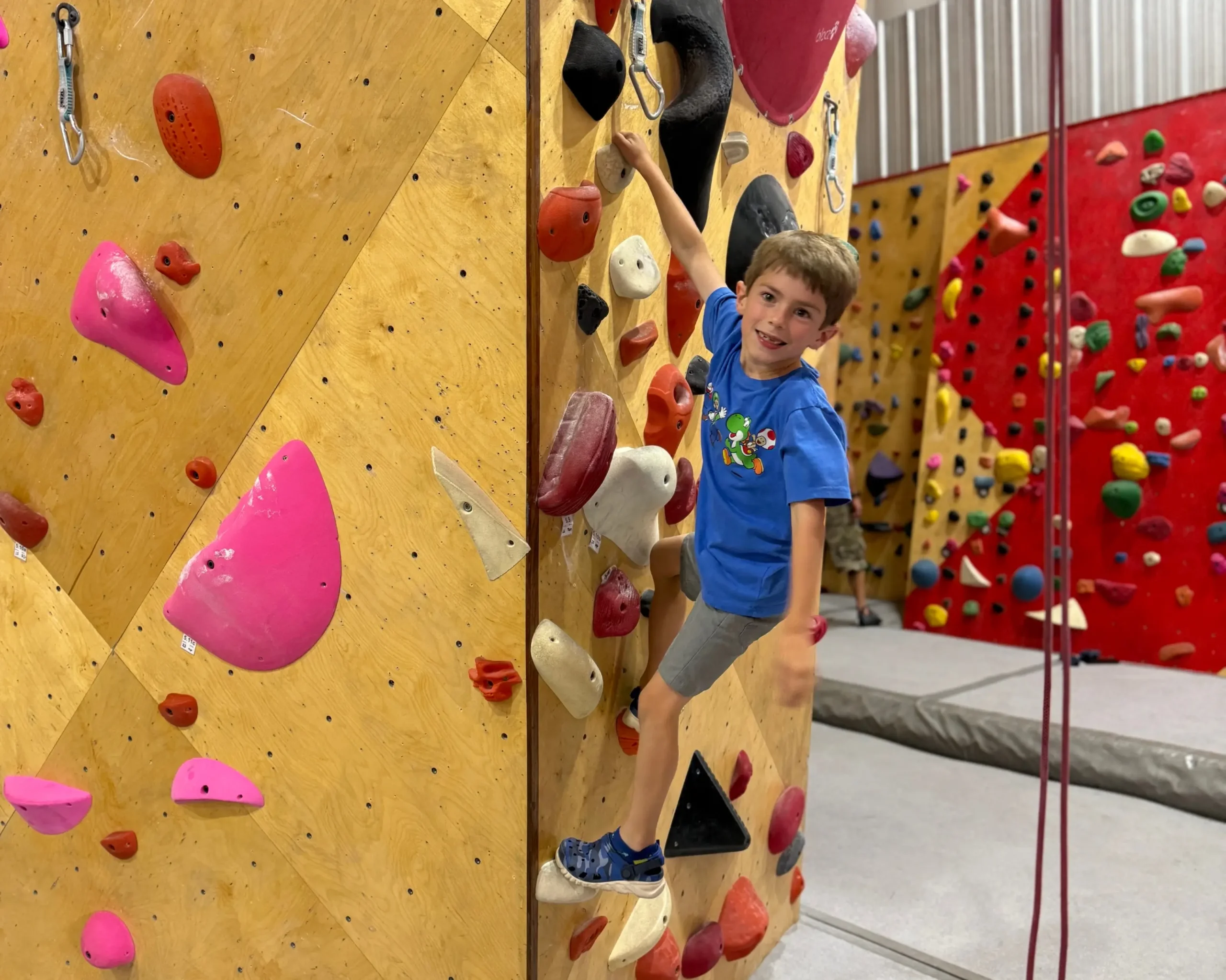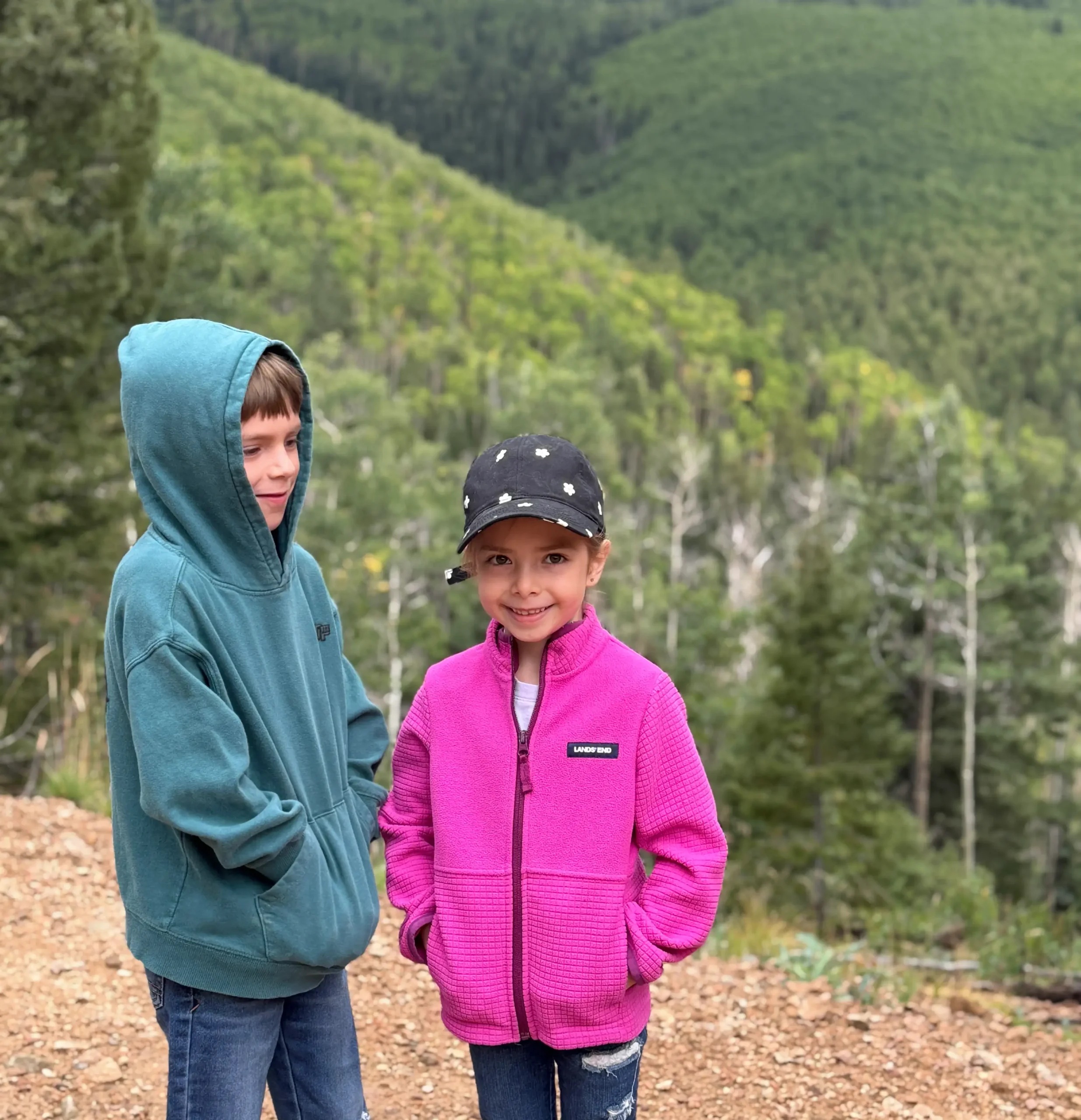Courtesy Photo: Ryker (7) and Aviva (5) getting in a final hike before the leaves change.
What one family’s journey taught them about learning, advocacy, and the true meaning of gratitude.
By Jen Paul Schroer
The holidays have a way of slowing us down just enough to see the things that matter most. Between the swirl of Thanksgiving gratitude and the glow of Christmas lights, I find myself reflecting on one of the most transformative seasons of my life — the year we truly came to understand our son’s learning journey.
Last school year, our son finished with straight A’s in a public school. We were proud — relieved, even — believing he had found his rhythm and confidence. But during a summer reading program sponsored by the New Mexico Public Education Department, we learned something unexpected: our son wasn’t reading on grade level.
At first, I thought there must be some mistake. How could a child earning top grades, even in reading, be performing below grade level? The disconnect between his report cards and reality left me both frustrated and confused. How had this never come up in parent-teacher conferences? How could his report cards and reality be so misaligned?
That question — how could this happen? — became the one I couldn’t ignore.
After many late-night conversations, my husband, Justin, and I made the decision to move our son to a private school. We hoped a smaller environment and individualized attention would help us better understand what was going on. But just one week after the new school year began, we were called in for a meeting with the principal and his teacher. They shared our son’s placement testing results and classroom work samples. With compassion and candor, they explained that his foundational reading and writing skills weren’t consistent with a rising second grader and recommended we consider having him repeat first grade.
That conversation broke me open.
We asked for four weeks before making a decision. We wanted time to observe, to analyze, and to give our son the chance to adjust to new school expectations, curriculum, and vocabulary. It was the best decision we could have made.
In those four weeks, we saw things we had missed, or perhaps things we hadn’t known to look for. Our son was painfully shy and hesitant to speak up in class. He had a hard time connecting and building new friendships. One day he’d bring home a beautifully written worksheet; the next, his handwriting looked like hurried scribbles. He could calculate math problems in his head faster than most adults, yet he bombed his online simple addition tests. We had no idea what was going on.
We hired a tutor to come in twice a week. She thought Ryker was doing great and should not repeat first grade, but in the classroom, he continued to struggle. Justin and I were working with him three hours a day trying to “catch him up.” While we saw some improvement — and Ryker showed incredible resilience and grit — our son was still struggling, and it was heartbreaking to watch. We needed a better understanding of what was really happening.

Courtesy Photo: Schroer Family this summer at Aunt Kelly’s Wedding in Colorado
Through a friend, I found a program at the Center for Reading at Pittsburg State University in Kansas. It offered what I had been searching for — a holistic, research-based approach focused on the whole child, not just academic performance.
This fall break, my son and I flew to Kansas, where he completed a five-day reading intervention program. During that week, he worked closely with four different educational psychologists and learning interventionists who assessed his foundational reading and language-processing skills: phonemic awareness, auditory processing, word decoding, spelling, and working memory. The results were both humbling and hopeful.
The program’s pre- and post-assessments showed significant growth across every area, with overall performance now in the high-average range and an exceptionally strong score in blending. But the data only told part of the story. What mattered most was seeing our son’s confidence return; watching him smile when he finished a book, hearing him read aloud with a rhythm and joy we hadn’t seen before.
Along the way, we also discovered that our son has a learning disability that affects his attention and processing speed. At seven years old, boys like him are often quiet, thoughtful, and easily overwhelmed by multi-step directions or fast-paced instruction. They tend to think deeply before answering, which can make them appear inattentive or hesitant. When tasks demand rapid responses, they may freeze — not because they don’t understand, but because their brains process information differently.
Understanding this changed everything.
When I wrote to his school to share what we had learned, I was nervous. I knew that private schools aren’t required by law to provide the same accommodations as public schools. I prayed that they would meet us with compassion, not resistance.
Their response brought me to tears. The principal and teacher replied with warmth and faith, affirming that every child is uniquely made, and that their role was to nurture our son’s strengths while helping him overcome his challenges. In that moment, I knew we were in the right place, and I remain hopeful that our collaboration with his teacher and school will continue to grow as we navigate this long and important journey together.
This holiday season, our family is overwhelmed with gratitude for answers, for progress, and for the educational professionals who saw what we could not. Most of all, we are thankful for our son, who continues to show us what courage and perseverance look like. This is how God made him and our role, as parents, is to help him flourish in that truth.
But as both a mother and an editor, I can’t end this story without acknowledging the privilege embedded in it. We had the resources and flexibility to seek out expert help for our son; something too many families simply don’t have access to.

Courtesy Photo: Aviva trying new things
Across New Mexico, thousands of families are facing similar challenges, and far too many children are quietly falling through the cracks of a system that doesn’t always catch them in time. According to Santa Fe Public Schools’ recently released testing data, about 42% of students are proficient in reading, up two percentage points from last year. Math proficiency remains unchanged at 22%, and science scores dropped to 32.6%. These numbers tell us there’s progress, but also a profound need for improvement.
As parents, we must keep advocating until we truly understand what’s happening with our children’s learning. If your gut tells you something is off — listen to it. Ask questions. Request evaluations. Seek outside expertise if needed. Don’t stop until you have real answers, not just reassuring grades.
To teachers: please, don’t pass students along with higher grades than they’ve earned. I know it’s tempting to reward effort or protect self-esteem, but inflated grades hide problems that only grow with time. Passing a child who cannot read is not kindness; it’s a disservice to their future.
To school administrators: the responsibility rests with you to ensure that district-wide accountability systems are effective. Data isn’t just a report; it’s a reflection of our children’s futures and your ability to lead and manage our schools. Data is accountability.
Let’s expect a world-class education for every New Mexico student, public or private.
This season, as we gather with family and reflect on what matters most, I’m reminded that gratitude is not just about what we have — it’s about what we’ve learned. For us, that means learning to see our child not through the lens of comparison, but through the truth of who he is: a bright, compassionate, and capable little boy who learns differently and that difference is something to be celebrated, not feared.
May every parent who reads this find the strength to keep asking questions, the courage to advocate fiercely, and the faith to believe that every child is fearfully and wonderfully made.

Courtesy Photo: Ryker having fun at Santa Fe Climbing Gym

Courtesy Photo: Ryker and Aviva cheering on the Chiefs after Ryker’s week long reading program in Kansas
Jen Paul Schroer is a dedicated community leader with a proven track record of driving positive change. As a three-time Senate-confirmed cabinet secretary, trade association CEO, and chamber of commerce executive director, Jen has extensive experience in both the public and private sectors. As a wife and mother of two, Jen is deeply committed to improving the local community and supporting the economic well-being of families as the editor and owner of Tumbleweeds magazine and other ventures.


